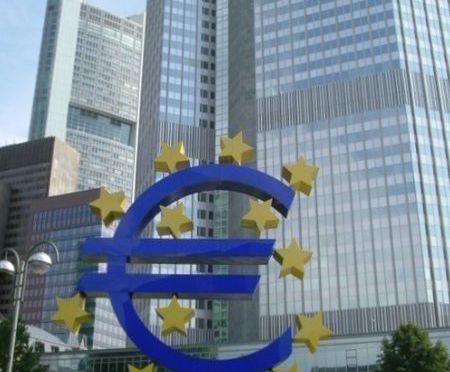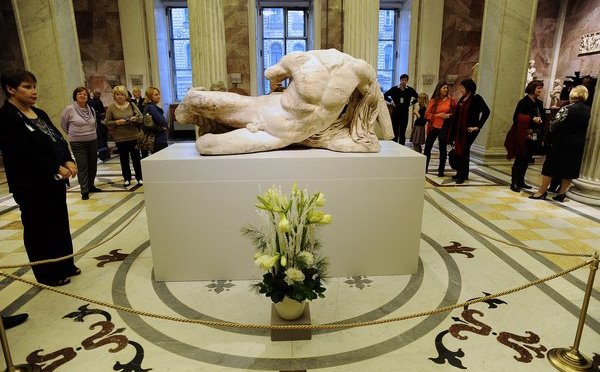Source: nytimes.com
LONDON — The British Museum plunged itself into a geopolitical tempest on Friday, lending one of the most disputed Greek artifacts to Russia’s State Hermitage Museum in a surprise arrangement that outraged Greece.
The loan of the artifact, one of the so-called Elgin marbles, a British Museum collection of Parthenon sculptures, also seemed at odds with the West’s increasing ostracism of Russia over the Ukraine conflict and a range of other East-West disputes.
Not only was it the first time that the British Museum has lent part of the collection, which Greece contends was looted by Lord Elgin in the 19th century, but it also was done in secret.
The British Museum announced the loan only after the artifact, a headless statue of the Greek river god Ilissos, was spirited to the Hermitage in St. Petersburg. It will be on display from Saturday through Jan. 18 and will form part of an exhibition celebrating the museum’s 250th anniversary.
The Greek government, which has long demanded the return of the entire collection, called the loan a provocation and “an affront” to Greeks everywhere. “We Greeks are one with our history and civilization, which cannot be broken up, loaned out or given away!” Prime Minister Antonis Samaras said.
The director of the British Museum, Neil MacGregor, defended the loan as an act of cultural diplomacy between two great museums at a time of heightened tension between their governments. “Both institutions believe it is precisely at moments like this that the museums have to keep speaking,” Mr. MacGregor said.
Richard Lambert, chairman of the board of trustees of the museum, said the trustees “believe that the great things of the world should be shared and enjoyed by the people of the world.” He said a vote by the board in early October to lend the sculpture was unanimous.
But both museums, conscious of the delicacy of the situation, held off for two months before publicly disclosing the loan. It was first revealed Friday inThe Times of London, which devoted most of six pages to the subject. The marble sculpture was originally removed from the left-hand corner of the west pediment of the Parthenon.
A spokeswoman for the Hermitage, Larisa Korabelnikova, said, “People need to see things — the rest is politics, not art.” Disputes between Greece and Britain “shouldn’t affect us,” she said.
The British Museum, Ms. Korabelnikova said, has given the Hermitage “a nice gift,” adding, “We have our jubilee — 250 years.”
Successive Greek governments have campaigned to have the 2,500-year-old sculptures returned to Greece. They were removed from the Parthenon and other buildings on the Acropolis by the Scottish nobleman Thomas Bruce, the Earl of Elgin, who put them on display in London in 1807. He sold them to the British government, which passed them on to the British Museum in 1816. Britain, and the museum, have insisted on keeping them — arguing that they were obtained legally by Lord Elgin (pronounced with a hard “g”) from the Ottoman rulers of Greece at the time, and that Greece was incapable of preserving them.
Lord Elgin claimed that he was saving the marbles, which he began removing at his own expense in 1801 while he served as an emissary to the Ottoman Empire. He shipped them home and sold them to Britain for what was then 35,000 pounds, a sum less than his costs, having turned down offers from others, including Napoleon.
Greece has been demanding the sculptures back ever since it won its independence from the Ottoman Empire. Politicians and artists ranging from Melina Mercouri, when she was Greece’s culture minister, to George Clooney and his wife, the lawyer Amal Clooney, have worked to win their restoration to an independent, modern Greece that is a member of the European Union.
Lord Elgin’s actions, which many outside Britain regard as theft, were sometimes criticized here, too, including by the poet Lord Byron, who is said to have scrawled “Quod non fecerunt Gothi, fecerunt Scoti” on the Acropolis (“What the Goths spared, the Scots have destroyed”).
Greek officials also said that one of Britain’s longstanding arguments for keeping the works — that they are too delicate to be moved — was contradicted by the loan to Russia. In 2009, Mr. Samaras, the Greek prime minister, opened a new, state-of-the-art museum at the Acropolis designed to display the marbles, instead of replicas, in part to undercut the other argument against their return, which was that Greece had polluted air and no facilities to protect them.
Dimitris Pantermalis, the head of the Acropolis museum, told Reuters: “You see, they can be moved. In the same way, they can be returned to Greece one day.”
Mr. Samaras is also eager to show his patriotism, as his rule is being challenged by the anti-austerity party Syriza, which is now the official opposition in Parliament.
Greek officials made clear that they will not demand that Russia return the statue, but will continue to work through the United Nations Educational, Scientific and Cultural Organization, Unesco, to try to reach a settlement with Britain.
Mr. MacGregor said that the Greek issue had never been about loans, but about the permanent home of the sculptures. There has never been a discussion with Greece about a loan, he told The Times of London. “To date they have always made it clear that they would not return them,” he said. “That rather puts the conversation on pause.”
In a post on the museum’s website, Mr. MacGregor cited the ancient Athenian leader Pericles, who said in a funeral oration for the dead warriors of Athens that “the whole earth is their sepulcher.”
“Two and a half thousand years later, I hope that Pericles would applaud the journey of Ilissos to Russia, where ‘far away in foreign lands,’ this stone ambassador of the Greek golden age and European ideals will write ancient Athens’s achievements,” Mr. MacGregor said.
Mikhail Piotrovsky, the director of the Hermitage, which is a centerpiece of the hometown of President Vladimir V. Putin, said he was thrilled by the loan. He called it “a very big and important gesture,” and said he hoped his relations with Greek museums would not be damaged.
Mr. MacGregor is the chairman of the Hermitage’s international advisory board and has had a long friendship with Mr. Piotrovsky, who said that “culture is the last bridge to burn.” Geraldine Norman, a British adviser to the Hermitage and head of the Hermitage Foundation UK, said the loan reflected “the very close relationship” between the two directors.
Mr. MacGregor created some controversy in another effort at cultural diplomacy in 2010, when he lent the National Museum of Iran the Cyrus Cylinder, a Persian clay tablet sometimes described as the earliest charter of human rights. It was seen by as many as 500,000 people in Iran.


